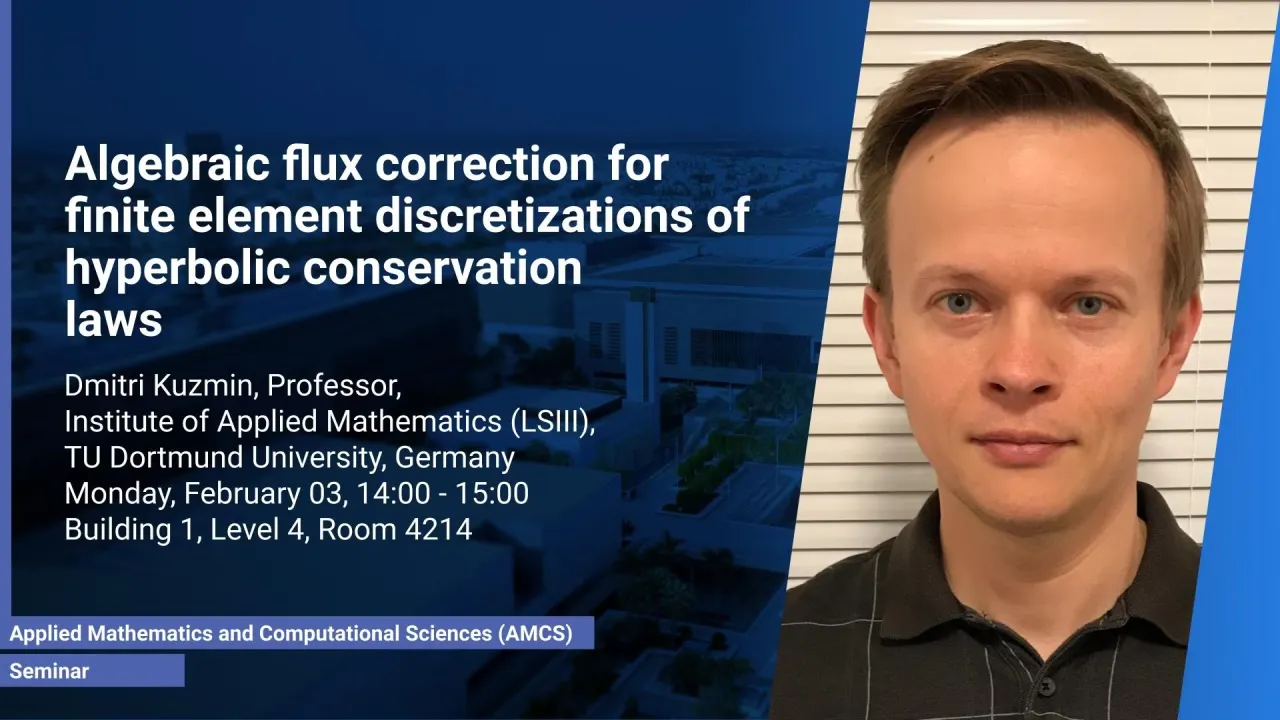
Algebraic flux correction for finite element discretizations of hyperbolic conservation laws
In this talk, we review some recent advances in the analysis and design of algebraic flux correction (AFC) schemes for hyperbolic problems. In contrast to most variational stabilization techniques, AFC approaches modify the standard Galerkin discretization in a way which provably guarantees the validity of discrete maximum principles for scalar conservation laws and invariant domain preservation for hyperbolic systems. The corresponding inequality constraints are enforced by adding diffusive fluxes, and bound-preserving antidiffusive corrections are performed to obtain nonlinear high-order approximations. After introducing the AFC methodology and the underlying theoretical framework in the context of continuous piecewise-linear finite element discretizations, we present some of the limiting techniques that we use in high-resolution AFC schemes. This presentation is based on joint work with Dr. Manuel Quezada de Luna (KAUST) and other collaborators.
Overview
Abstract
In this talk, we review some recent advances in the analysis and design of algebraic flux correction (AFC) schemes for hyperbolic problems. In contrast to most variational stabilization techniques, AFC approaches modify the standard Galerkin discretization in a way which provably guarantees the validity of discrete maximum principles for scalar conservation laws and invariant domain preservation for hyperbolic systems. The corresponding inequality constraints are enforced by adding diffusive fluxes, and bound-preserving antidiffusive corrections are performed to obtain nonlinear high-order approximations. After introducing the AFC methodology and the underlying theoretical framework in the context of continuous piecewise-linear finite element discretizations, we present some of the limiting techniques that we use in high-resolution AFC schemes. As an alternative to flux-corrected transport (FCT) algorithms which apply limited antidiffusive corrections to bound-preserving low-order solutions, we propose a new limiting strategy based on representation of these solutions as convex combinations of "bar states" satisfying physical and numerical admissibility conditions. Each antidiff usive flux is limited so as to guarantee that the associated bar state remains in the convex invariant set and preserves appropriate local bounds. There is no free parameter, and the nonlinear discrete problem is well-defined even in the steady-state limit. Extensions to high-order finite elements can be carried out using the Bernstein basis representation or partitioned finite element spaces. Examples of such extensions will be presented in the last part of the talk. This presentation is based on joint work with Dr. Manuel Quezada de Luna (KAUST) and other collaborators.
Brief Biography
Dmitri Kuzmin is a Professor at the Institute of Applied Mathematics (LS III) at TU Dortmund University in Germany. Before his current appointment, he was a Professor at the University Erlangen-Nuremberg, an Associate Professor at the University of Houston, and a Junior Professor at TU Dortmund University. Prof. Kuzmin received his Ph.D. in Mathematical Information Technology at the University of Jyvaskyla, Finland. His research interests are broad but focus on the field of physics-compatible high-resolution finite element schemes for computational fluid dynamics. His contributions to the field include two books and 75 refereed articles.
